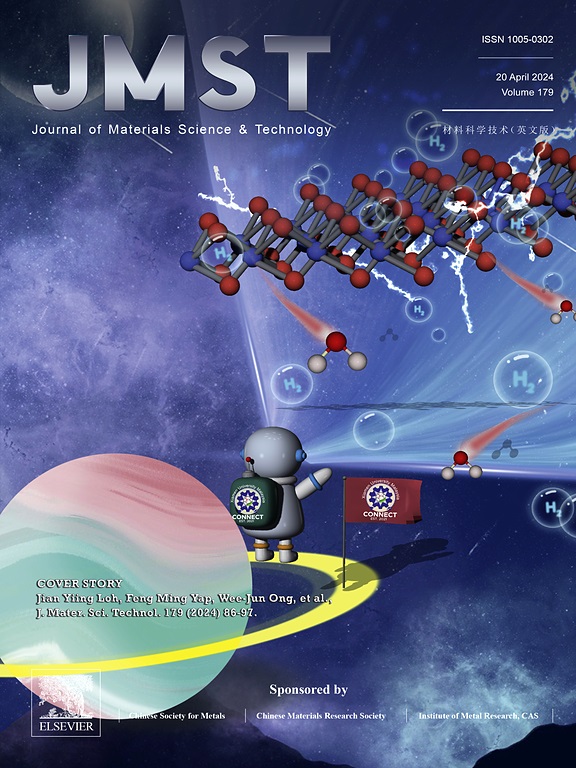Engineering of zinc-bismuth binary microspheres and evaluation of ZnBi-rich primer for corrosion protection of steel in marine environment
IF 11.2
1区 材料科学
Q1 MATERIALS SCIENCE, MULTIDISCIPLINARY
引用次数: 0
Abstract
Zinc-rich primers (ZRPs) are highly effective for steel corrosion protection. In this study, two types of zinc-bismuth binary microspheres (ZnBi1 and ZnBi2) were produced via co-evaporation of zinc and bismuth under gas flow rates of 4 Nl/min and 0.3 Nl/min. Scanning electron microscopy and energy-dispersive spectrometer, X-ray diffraction and differential scanning calorimetry analyses showed that both ZnBi1 and ZnBi2 particles were heterogeneous solidified mixtures, with Zn and Bi non-uniformly distributed in individual particles. ZnBi1, with finer particle size, exhibited higher self-corrosion and galvanic corrosion rates in 3.5 wt.% NaCl solution in its pulverized state. The particles were incorporated into ZRPs, and their sacrificial effects were evaluated using a salt spray exposure test, open circuit potential (OCP) and electrochemical impedance spectroscopy measurements. Compared to conventional ZRP containing 78 wt.% commercial zinc dust, the coating with 78 wt.% ZnBi1 particles exhibited enhanced cathodic protection at an early stage of exposure due to promoted sacrificial oxidation of zinc at damaged areas. However, the accelerated zinc oxidation led to a shortened cathodic protection duration as observed in the OCP result. A combination of ZnBi particles and commercial zinc dust mitigated the intense galvanic function, resulting in a more stable galvanic activity and improved anticorrosion performance.

海洋环境中锌铋二元微球工程及富锌铋底漆的评价
富锌底漆(zrp)是一种非常有效的钢防腐底漆。在4 Nl/min和0.3 Nl/min的气体流速下,通过锌和铋的共蒸发,制备了锌铋二元微球ZnBi1和ZnBi2。扫描电镜、能谱仪、x射线衍射和差示扫描量热分析表明,ZnBi1和ZnBi2颗粒均为非均相凝固混合物,Zn和Bi在单个颗粒中分布不均匀。细粒度的ZnBi1在3.5 wt.% NaCl溶液中具有较高的自腐蚀速率和电偶腐蚀速率。将这些颗粒加入到zrp中,通过盐雾暴露试验、开路电位(OCP)和电化学阻抗谱测量来评估它们的牺牲效应。与含有78 wt.%商业锌粉的传统ZRP相比,含有78 wt.% ZnBi1颗粒的涂层在暴露早期表现出增强的阴极保护,这是由于在受损区域促进锌的牺牲氧化。然而,在OCP结果中观察到,加速锌氧化导致阴极保护时间缩短。ZnBi颗粒和商品锌粉的结合减轻了强烈的电偶功能,从而产生更稳定的电偶活性和更好的防腐性能。
本文章由计算机程序翻译,如有差异,请以英文原文为准。
求助全文
约1分钟内获得全文
求助全文
来源期刊

Journal of Materials Science & Technology
工程技术-材料科学:综合
CiteScore
20.00
自引率
11.00%
发文量
995
审稿时长
13 days
期刊介绍:
Journal of Materials Science & Technology strives to promote global collaboration in the field of materials science and technology. It primarily publishes original research papers, invited review articles, letters, research notes, and summaries of scientific achievements. The journal covers a wide range of materials science and technology topics, including metallic materials, inorganic nonmetallic materials, and composite materials.
 求助内容:
求助内容: 应助结果提醒方式:
应助结果提醒方式:


